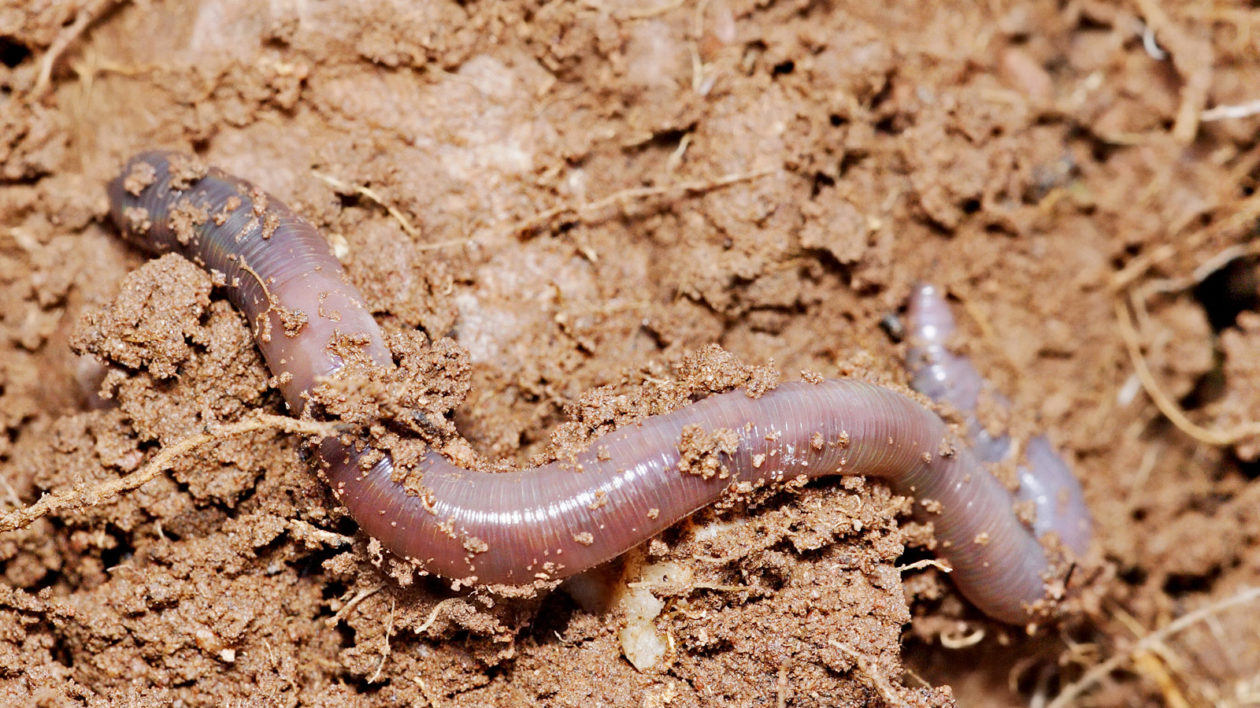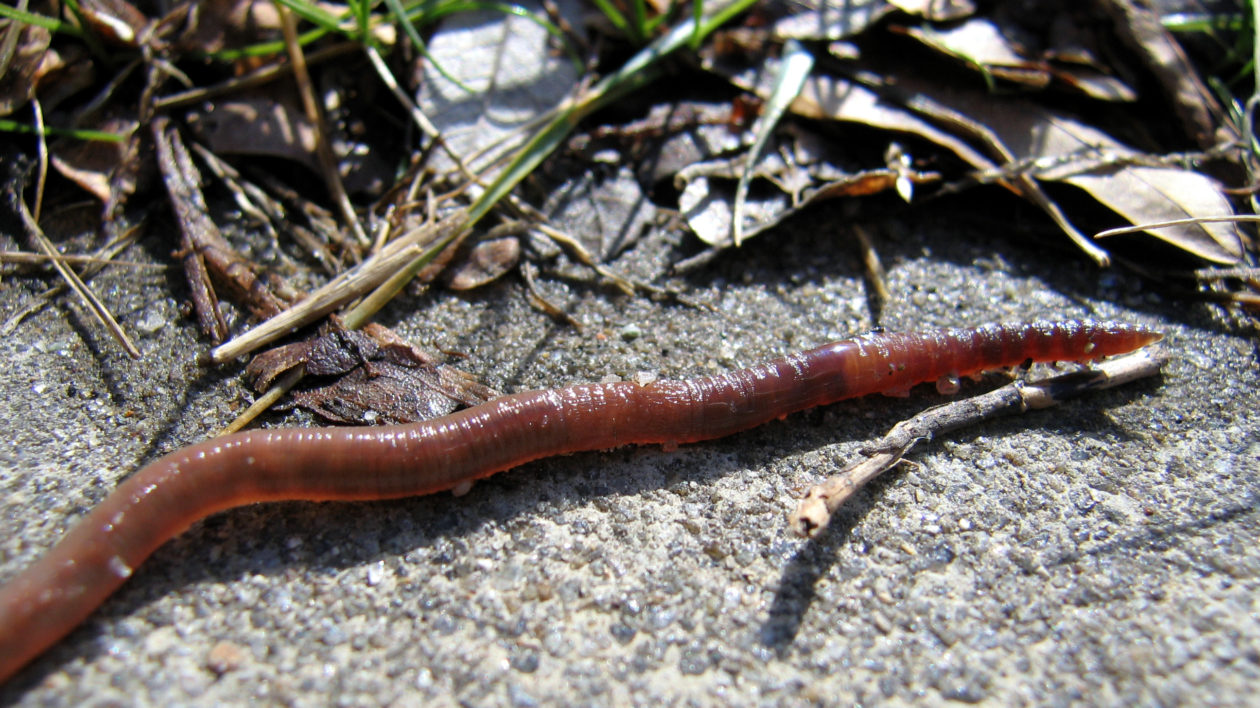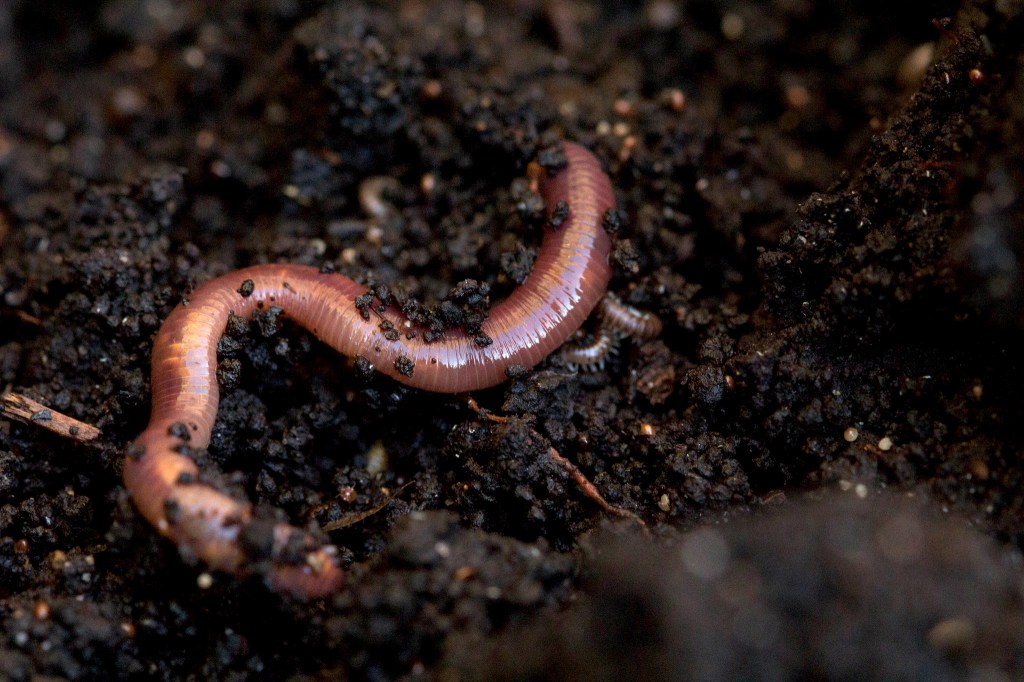I spent much of my walk across town this morning dodging earthworms. It has rained much of the past 24 hours, and the worms were everywhere. On the sidewalk, in puddles, on the street.
Many of us have seen so many earthworms emerging after rainstorms that we don’t pay much attention. Even the most curious urban naturalist probably doesn’t think about it much, because we already assume we know what’s going on. It is probably one of the first “nature lessons” we learned at school: earthworms have to come to the surface after rain because they’re drowning.
As is the case with so many nature stories, the real reason is likely more complicated than we imagine. Let’s dig deep, if you’ll pardon the pun, and look at what’s really happening when we see earthworms on a soggy sidewalk.
The Truth About Drowning Worms
Conventional wisdom holds that earthworms head to the surface after rain because they can’t breathe. This is still taught to schoolkids, and you can find a lot of detailed explanation online. Most claim that worm trails and air pockets underground become submerged, and the earthworms can’t breathe. It makes sense.
Most researchers, though, dispute this explanation. As Chris Lowe, a researcher at the University of Central Lancashire, points out in Scientific American, earthworms breathe through their skin and require moisture to do so.
Become a Member
Make a lasting impact for nature when you join The Nature Conservancy
Humans drown when their lungs fill with water. This is not possible for earthworms as they lack lungs. Multiple studies have also shown that most earthworm species can survive being submerged in water for two weeks or more.
Lately, most popular scientific accounts write off the “drowning worm” idea as a myth. While it is certainly not likely the entire explanation, perhaps we shouldn’t entirely rule it out. Research published in the journal Invertebrate Biology, for instance, found that worm behavior following rain depended on the species.
Two earthworm species with different life histories were investigated by the Taiwanese researchers. One species consumed more oxygen at night than during the day, and the other consumed lower amounts of oxygen equally during a 24-hour period.
The species that consumed more oxygen at night tolerated water immersion poorly. At night, when it needed oxygen the most, it was especially intolerant of rainfall and came to the surface.
The other species never came to the surface, even during the rain. Its consistent, lower intake of oxygen enabled it to better stand water immersion.
So it may well be that the earthworms you see on sidewalks and streets are those that need more oxygen. But many researchers doubt this is the entire explanation.

Raindrops Sound Like…Moles?
Another common explanation for worm emergence is that rain sounds like predators, so the worms come to the surface to escape. Moles, common earthworm predators, make vibrations in the soil as they hunt.
A tradition in the Appalachians and elsewhere, called worm grunting or fiddling, involves using a saw or stick to make vibrations on the soil’s surface. This brings worms to the top that are then harvested for bait. Essentially, humans are mimicking the sounds of hunting moles. (I admit I have tried this without much luck).
The predation-escape theory suggests that the patter of raindrops is also similar to the sound of moles. University of Wisconsin professor Thea Whitman notes that this theory has never been demonstrated in laboratory tests. It always seemed like an unconvincing explanation to me. After all, worms emerge after a prolonged, misty rain that doesn’t strike the ground with as much force.

It’s Not All The Worms
If worms were dying due to moisture, or fleeing predators, you might expect to see a broad cross-section of a given worm population. But that’s not the case. After a rainstorm, not all of the worms of a given species come to the surface.
As Phil Nixon of the University of Illinois explained to Mental Floss:
“If the other factors were the driving influences, large numbers of juvenile worms should also be present, but the vast majority appears to be adult red worms with occasional adult nightcrawlers. When worms are brought to the surface with electricity, worm-grunting, or chemicals, many more worms are present. It is obvious that only a small percentage of the adult red worms are emerging during heavy rains.”
Think about this. You are not seeing young earthworms in your damp backyard. If they were faced with certain death, they’d be there with all the adults.
Something else is going on.

Moving on Up
Many earthworm and soil experts have settled on a version of this explanation: Moving around the soil is relatively slow and difficult, even for earthworms. They can cover a lot more ground on the surface. The problem is, earthworms need to stay moist. Most of the time, they would dehydrate if they were above ground.
But when it rains, the surface is moist enough for worms to survive and remain hydrated. For a few species, they can more easily move about and find mates. For other earthworms, it may well just be a way to disperse and move into new territory. They can migrate much longer distances than they ever could underground.
Of course, coming to the surface poses hazards. The earthworms are easy pickings for birds and other predators. In our urban and suburban world, they also get trapped on sidewalks, patios and roads. The worms I encountered this morning gave the impression that their migration strategy was a failed one. But most worms survive. They move across the lawn or park and burrow back into the soil without any problems.
There undoubtedly will be new research and new revelations about the lives and habits of earthworms. Nature’s mysteries are not just “out there” in the wilderness. The common creatures that live around us still hold surprises. Take a moment and observe the phenomenon happening in the natural world, right now, where we live. The surprises and wonders are right under our feet.




So what would the explanation be for the lack of juvenile worms (and what size metrics qualifies a worm juvenile) in the “covering more ground” theory, perhaps they are not yet sexually active, and/or don’t need to cover more ground while in their smaller stages. This I suppose could be due to the direct proportional relation to food availability in they’re immediate habitat and the size of they’re body (less energy needed than a larger adult). I would also propose the idea that littler worms can potientially move with more freedom underground than their adult counterparts due to the physics involved in displacing soil particles.
I and my two you g boys were observing some earthworms last night after a heavy rain. It really seemed like they were attracted to the water. We would move them to the grass and they would keep crawling across the sidewalk into a stream of water running down our street. My boys had fun “rescuing” them until we realized they really seemed to be seeking out the water, maybe as a mode of transportation ?
Thanks so much. I try to avoid stepping on them when I walk. I also try pitching the back into the grass as they sometimes seem to be struggling, drying out and heading for larger concrete areas where I know they will die trying.
Recently we had a very hard rain. In the morning, I saw a number of earthworms crawling up the side of my stucco house. I have photos on my cell phone. Unfortunately, I can only text the photos, if you are interested. Later, they had all fallen down onto the surface of my wet cement patio. If they just wanted to move on the wet surface, why did they crawl up my wall?
Great article thanks for the good research and thoughtful note.
Thank you. This was, actually, very interesting, and now I really do want to know more! The idea that this might be a mating/dispersal strategy permitted by above-ground moisture is startling, but yeah, I really haven’t seen too many juvenile earth worms out after a night’s rain (and it often does seem to be a night’s rain that matters).
Cool!
Hate to sound like a know-it-all here, but Kenneth Catania (Vanderbilt University) actually did perform laboratory tests to demonstrate the predator escape behavior. The worms are the (regionally) famous “grunt worms” in northern Florida (members of the genus Diplocardia). The vibrations created by moles are not really similar to those caused by rainfall, though, so the rainfall response is probably driven by something else.
Catania KC (2008) Worm Grunting, Fiddling, and Charming—Humans Unknowingly Mimic a Predator to Harvest Bait. PLoS ONE 3(10): e3472. https://doi.org/10.1371/journal.pone.0003472
On December 9th I found 8 young (looking like) night-crawlers in the street, during a 2 block walk . We’d had 9/10th of an inch of rain overnight. Is picking them up for relocation in the grass helpful to the worms beyond keeping them from being run over by cars? nancy stafford
It would not hurt the worms, and would help them get back underground more quickly (which increases the chance of survival). Many thanks for your question. Keep observing nature!
Best,
Matt Miller
Editor, Cool Green Science
Interesting story.
Thank you for a well-written post on earthworms. We keep red wigglers to digest and turn our organic kitchen waste into compost. Best compost we have experienced.
For more on conservation – wildandfreefoundation@yahoo.com
I have red worms that invade my hot tub when it rains! They crawl up the side and hide under the edge of the cover. If I don’t catch them quickly, they hang out there, defecating until they’re very skinny. They make a mess in the tub.
I would love to find some way to repel them. Any ideas?
I think they’re what people call “red wigglers.” They’re not earthworms–smaller and without the raised band. I call them the “germy wormies.”
I was tole that the worms are breeding when on top of the ground. Thoughts?
Thank you for the information I learnt so much about earthworms as they are so important to our gardens & often underestimate their true value to our environment. I now look upon them with greater respect the humble earthworm.